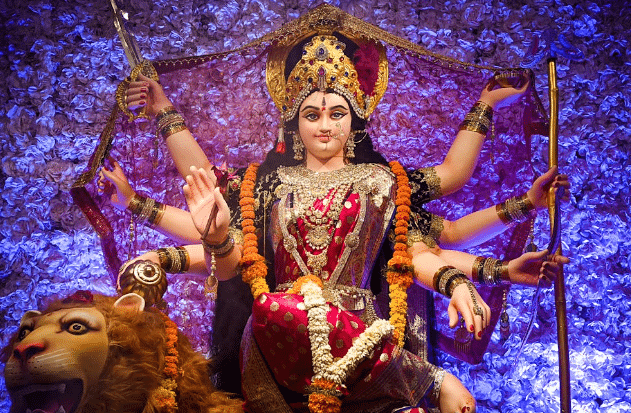
Spirituality
Navratri 2024: Maa’s vehicles and their spiritual Significance
Navratri is a joyful time when people celebrate the strength and grace of the Divine feminine. It’s a spiritual journey where devotees can align their own energies with those of the heavens, drawing closer to the divine Mother and advancing on their spiritual path. The festival holds many layers of significance, from the auspicious timing of its beginning and end to the symbolism of the vehicles that carry the divine presence. Each aspect offers an opportunity for deeper understanding and connection with spirituality.
In this blog, we’ll delve into the significance of the vehicles associated with the Divine Mother during Navratri. These vehicles, often overlooked, carry profound messages about our spiritual journey and the guidance available to us. By exploring their symbolism, we can gain insights that enhance our spiritual growth and deepen our connection to the divine feminine energy celebrated during Navratri. Let’s begin.
Devi Bhagavatam, also spelled as Devi Bhagavata Purana, is one of the major Puranas in Hinduism. It primarily focuses on the divine feminine principle, Devi, the Goddess, and her various manifestations. It has a below mantra:
शशिसूर्ये गजारूढ़ा शनिभौमे तुरंगमे। गुरौ शुक्रे दोलायां बुधे नौका प्रकीर्तिता॥
Shashisurye Gajarudha Shanibhaume Turangame |
Gurau Shukre Dolayam Budhe Nauka Prakirtita ||
When the Navratri Puja Kalash is set up on a Sunday or Monday, Goddess Durga arrives riding an elephant. It’s considered highly auspicious for her to choose this majestic creature, symbolizing abundant rainfall and the fruitful rewards of diligence, along with the blessings of a nurturing mother. Conversely, when Navratri commences on a Saturday or Tuesday, the Goddess arrives on a horse. This signifies a shift in power dynamics or potential conflict, favoring those in opposition and presenting challenges for the ruling party. If Maa Durga arrives on Wednesday, she comes on a boat, then everything is good and it is auspicious. If the Navratri Puja Kalash is set up on a Thursday or Friday, the deity comes sitting in the palanquin, then there is a possibility of an epidemic.
This is not just a mere mantra. It has deep spiritual meanings behind it. Let’s take a look at the meaning behind it.
When Maa arrives riding the elephant:
When the Navratri Puja Kalash is established on a Sunday or Monday, it heralds the arrival of Goddess Durga, adorned upon the back of an elephant. This choice of conveyance holds deep symbolic significance within the spiritual realm.
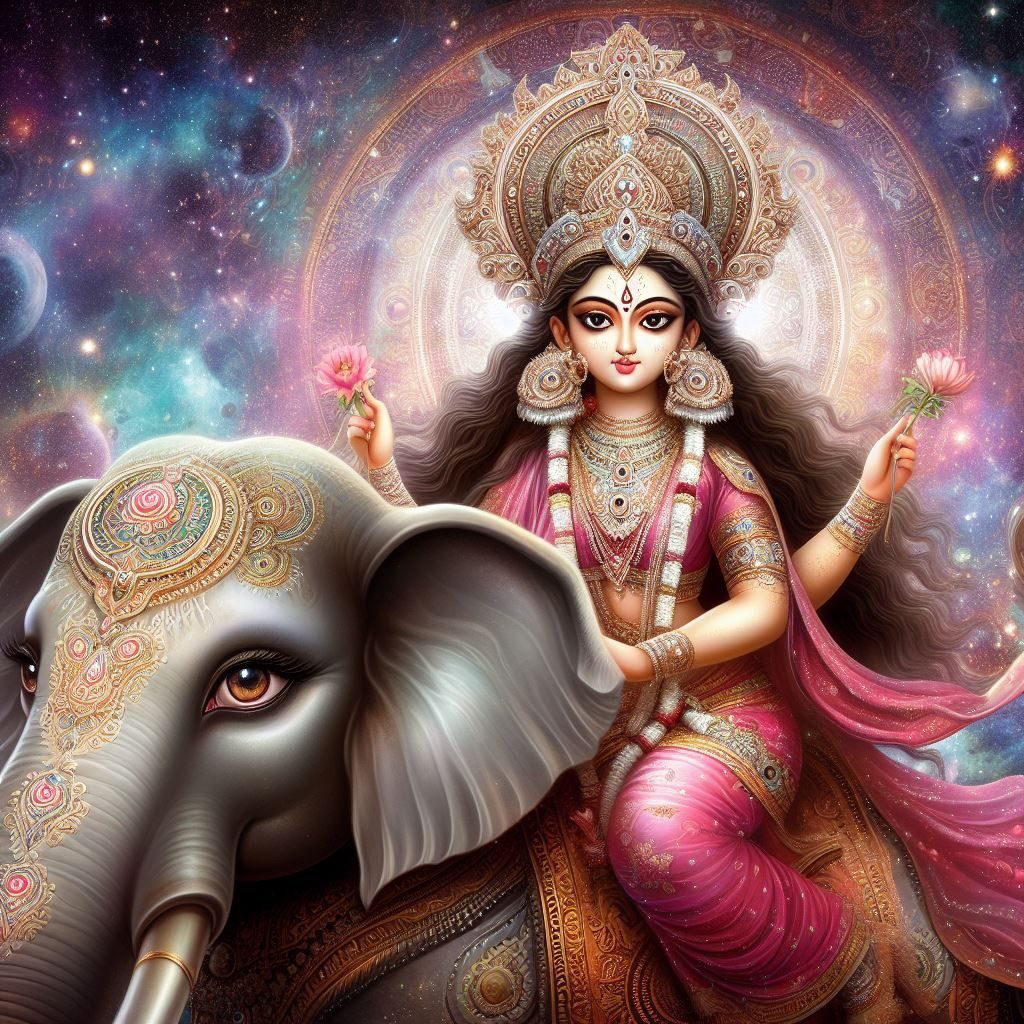
The elephant, revered for its strength, wisdom, and gentle demeanor, embodies a profound message of abundance and nurturing. Its presence during the commencement of Navratri signifies the promise of plentiful blessings, akin to the life-sustaining rains that nourish the earth. This auspicious arrival is a reminder of the fruits borne from dedicated effort and perseverance, as well as the unconditional love and protection bestowed upon devotees by the divine Mother.
In preparation for the arrival of Maa Durga riding the elephant, it is essential to cultivate a mindset of receptivity and gratitude. Mentally, one should embrace the symbolism of the elephant, recognizing the inherent strength and wisdom it represents. This is a time to reflect on the importance of diligence and dedication in one’s spiritual journey, knowing that perseverance will lead to bountiful rewards.
Physically, devotees may engage in practices that align with the themes of abundance and nurturing, such as acts of charity and kindness towards others. By immersing oneself in these preparations, individuals can open themselves to receive the blessings and guidance that accompany the divine presence of Goddess Durga on her noble mount.
When Maa arrives on a Boat:
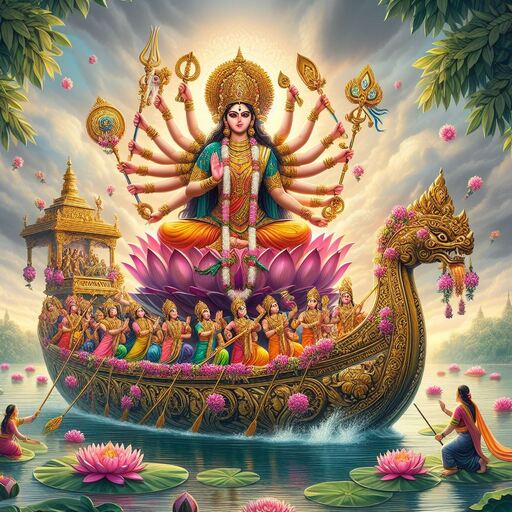
When Navratri happens on a Wednesday and Maa Durga arrives on a boat, it brings good luck and peace. The boat she comes on is full of meaning. It shows guidance and helps us go through life smoothly. It means things will go well in life.
Maa Durga coming on a boat during Navratri tells us to trust and let go. Just like a boat goes with the flow of water, we should trust in life’s journey. We should trust Maa Durga to guide and protect us.
To get ready for Maa Durga’s arrival, we need to find inner peace and be thankful. We should let go of worries and trust in divine blessings.To prepare physically, we can do things that relax us and bring balance. Spending time in nature or meditating can help calm our minds and bodies. By staying calm and open, we can welcome Maa Durga’s blessings and guidance. With her support, we can face life’s challenges gracefully.
When Maa arrives sitting in the Palanquin:
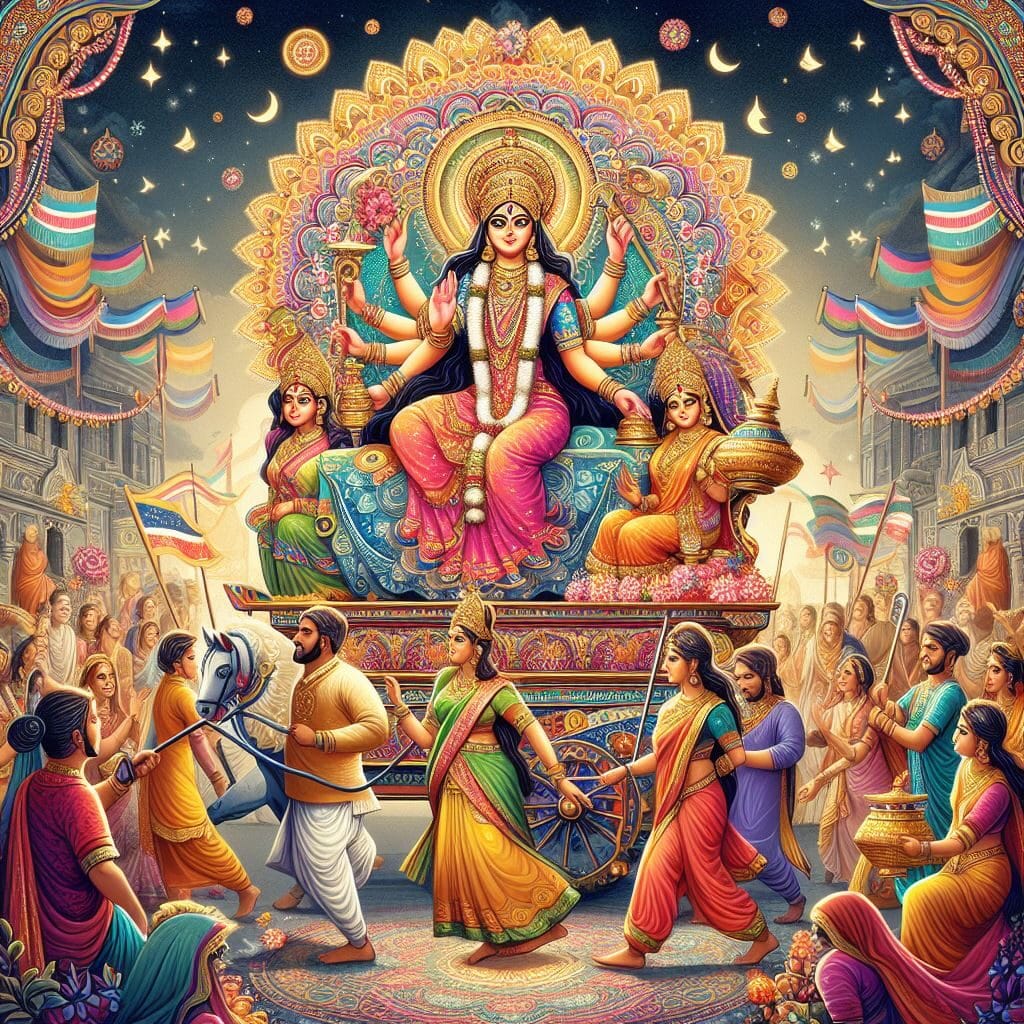
When Navratri starts on a Thursday or Friday and Maa Durga arrives in a palanquin, it’s a sign to be cautious. The palanquin, a symbol of honor and protection, hints that there might be challenges ahead, like an epidemic. This arrival reminds us to stay alert and take care of ourselves and others.
Maa Durga’s arrival in a palanquin during Navratri teaches us to be strong, prepared, and caring. We should focus on staying healthy and helping those who need it. Mentally, we should build inner strength and come together as a community, drawing from Maa Durga’s teachings to face tough times with courage.
To get ready for Maa Durga’s arrival in a palanquin, we should take steps to stay healthy. This includes following hygiene rules, eating well, and staying updated on public health news. We can also practice activities like meditation and connecting with loved ones for emotional support. By preparing both mentally and physically, we can approach Navratri feeling empowered and ready to handle whatever comes our way, knowing Maa Durga is watching over us.
When Maa arrives riding the horse:
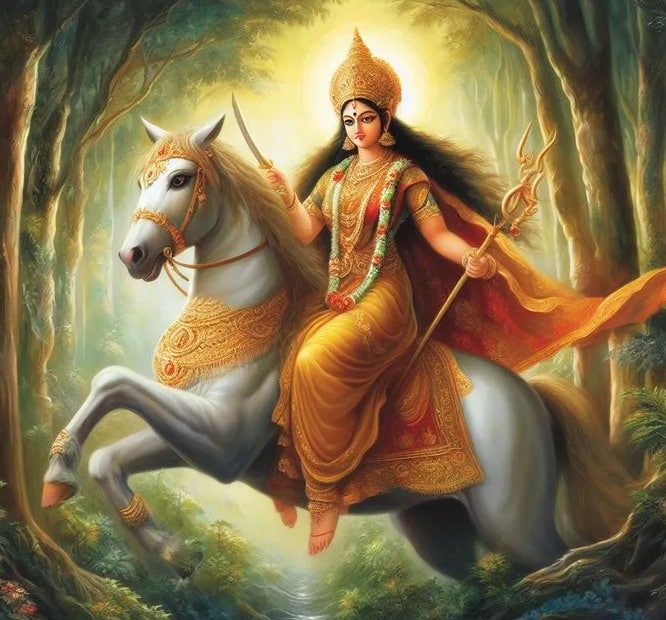
When Navratri starts on a Saturday or Tuesday, it’s a time when Goddess Durga comes riding a horse, signaling a big change in spiritual energies. The horse represents power, agility, and strength, showing that this phase will be dynamic and transformative.
The horse’s presence suggests there might be conflicts or challenges in the spiritual realm. This reminds us to stay vigilant and be ready to face any obstacles with inner strength and courage. Goddess Durga arriving on a horse during Navratri reminds us that power doesn’t last forever, and change is inevitable. It encourages us to look within ourselves and deal with any inner conflicts that might hold us back.
This phase calls for introspection, self-reflection, and the ability to adapt to changes with resilience and grace. Mentally preparing for this means being flexible and strong, knowing that challenges can lead to growth. Physically, we can prepare for Goddess Durga’s arrival on a horse by doing activities like yoga, meditation, and mindful movement. These help us stay balanced and calm, making it easier to handle uncertain times with grace.
By embracing these preparations wholeheartedly, devotees can align themselves with the transformative energies of Navratri and emerge stronger, wiser, and more spiritually attuned to the divine presence of Goddess Durga.
In the context of the upcoming Navratri in 2024, where the Goddess arrives on a horse herself, the significance deepens. This alignment underscores the intensity and immediacy of the transformative energies at play during this particular festival.
When Maa departs riding the buffalo:
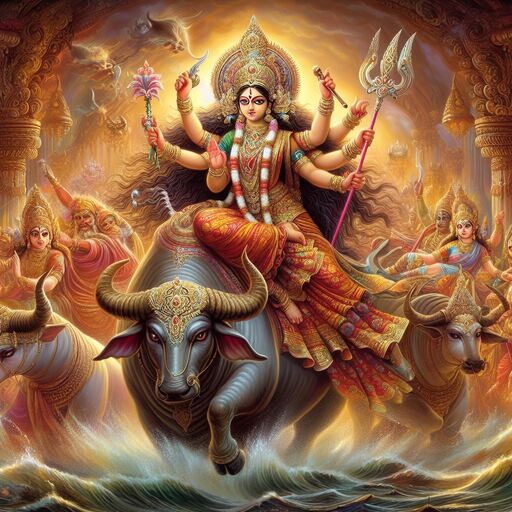
When the Goddess leaves on a buffalo, often on a Sunday or Monday, it holds deep spiritual meaning tied to cultural beliefs. This departure signals a time when illness and sadness are thought to increase in society. Symbolically, the Goddess riding a buffalo represents a shift into a phase where challenges and hardships might become more common.
From a spiritual view, the Goddess leaving on a buffalo reminds us of life’s cycles. Communities might feel more vulnerable during this time, leading to reflection on personal and group well-being. People often turn to spiritual practices for comfort, renewing their trust in divine protection.
Getting ready mentally and physically for the expected rise in illness and sadness involves many steps. Mentally, it means building resilience and inner strength. Spiritually, it means deepening our connection with the divine through prayer, meditation, and acts of devotion. Physically, it means taking proactive measures like staying clean, following health advice, and helping those who need it. By taking a holistic approach covering spiritual, mental, and physical well-being, we can better face the challenges signaled by the Goddess’s departure on a buffalo.
When Maa departs riding the rooster:
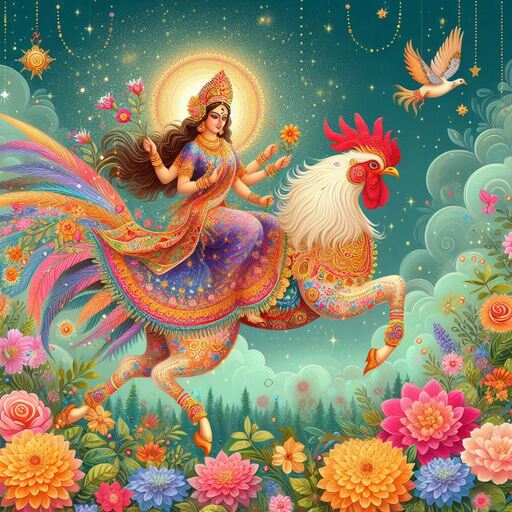
When the mother goddess leaves on a rooster, usually on a Saturday or Tuesday, it has deep spiritual meaning in spirituality. This departure marks a time when difficulties and suffering are thought to increase in the community. The mother goddess represents nurturing, protection, and feminine energy. Her departure on a rooster shows a shift in the balance of the universe, indicating a time when challenges may become more common.
Spiritually, the departure of the mother goddess on a rooster makes us think about how life is always changing and how we are all connected. It reminds us that life has both good and bad parts. During this time, people turn to their spiritual practices for comfort, guidance, and strength. Through prayer, meditation, and acts of devotion, they try to find peace in uncertain times.
Getting ready mentally and physically for the expected increase in suffering means taking a comprehensive approach. Mentally, it involves building resilience, acceptance, and flexibility when facing tough times. Practices like mindfulness and positive thinking can help keep the mind clear and emotions stable.
Spiritually, it means deepening our connection with the divine through rituals, self-reflection, and helping others. Physically, it means taking care of ourselves, staying healthy, and supporting those in need in our community. By preparing spiritually, mentally, and physically, we can face the challenges that the departure of the mother goddess on a rooster might bring with more grace and strength.
When Maa departs riding the elephant:
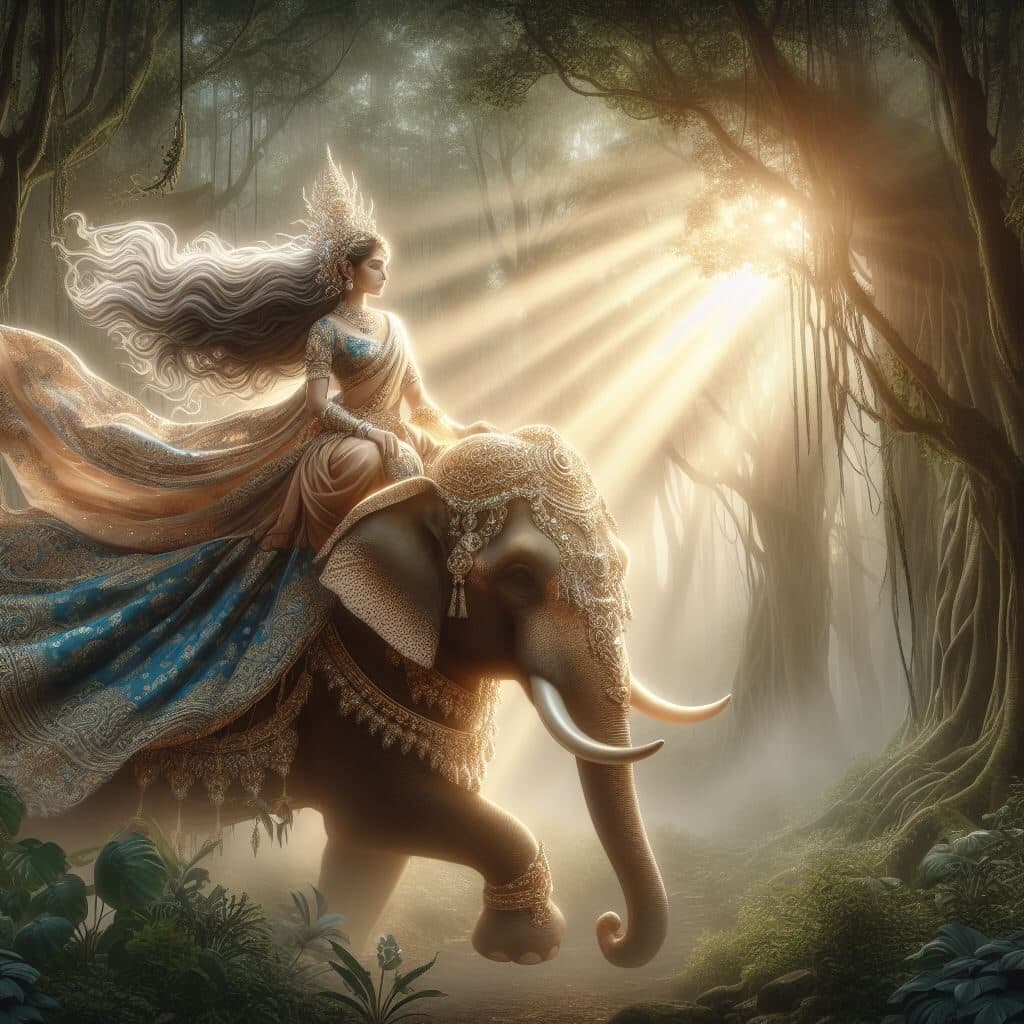
When the mother goddess rides an elephant, usually on a Wednesday or Friday, it means there will be heavy rain. This isn’t just about the weather; it’s also a spiritual thing. The mother goddess represents nature and fertility, and her riding an elephant symbolizes a connection with the natural world. It’s like a reminder to respect nature and be grateful for its gifts.
To get ready for heavy rain after the mother goddess departs on an elephant, we need to be prepared both mentally and physically. Mentally, it means staying calm and flexible, knowing that things might get a bit tough but we can handle it. Physically, we should make sure we have what we need to stay safe and comfortable during the rain, like finding shelter and stocking up on food and supplies. It’s about being aware of the changes that might come with the heavy rain and getting ready to face them with a positive attitude.
Wishing everyone a joyous and spiritually enriching Navratri! May the blessings of Goddess Durga illuminate your path and empower you to navigate through life’s challenges with grace and strength. Happy Navratri 2024!
Please subscribe to our mailing list to stay connected and receive spiritual information. In case of any queries, please write to us at info@chamundaswamiji.com. You can check out our YouTube channel Chamunda Swamiji where you can learn Tantra, Mantra, Yantra, and Meditation from His Holiness Shri Chamunda Swamiji. If you seek to learn Shakti Kriya, please register with us, and we will get back to you.
Post a Comment
-
Subscribe to Our Blog
-
Categories
-
Popular Articles
- Dead moth in the house. What universe is trying to tell you?
- Vivah Bandhan Curse – What Is It and How to Spiritually Heal It.
- Tripura Sundari | The Dasa Mahavidya
- What are Beej Mantras?
- The Dasa Mahavidyas
- Ramakrishna Paramhansa – The Man who almost became a Woman
- Maa Bhuvaneshwari | The Dasa Mahavidyas
- How does the Moon Affect Us?
- Maa Chinnamasta | The Dasa Mahavidyas
- Maa Bhairavi | The Dasa Mahavidyas



